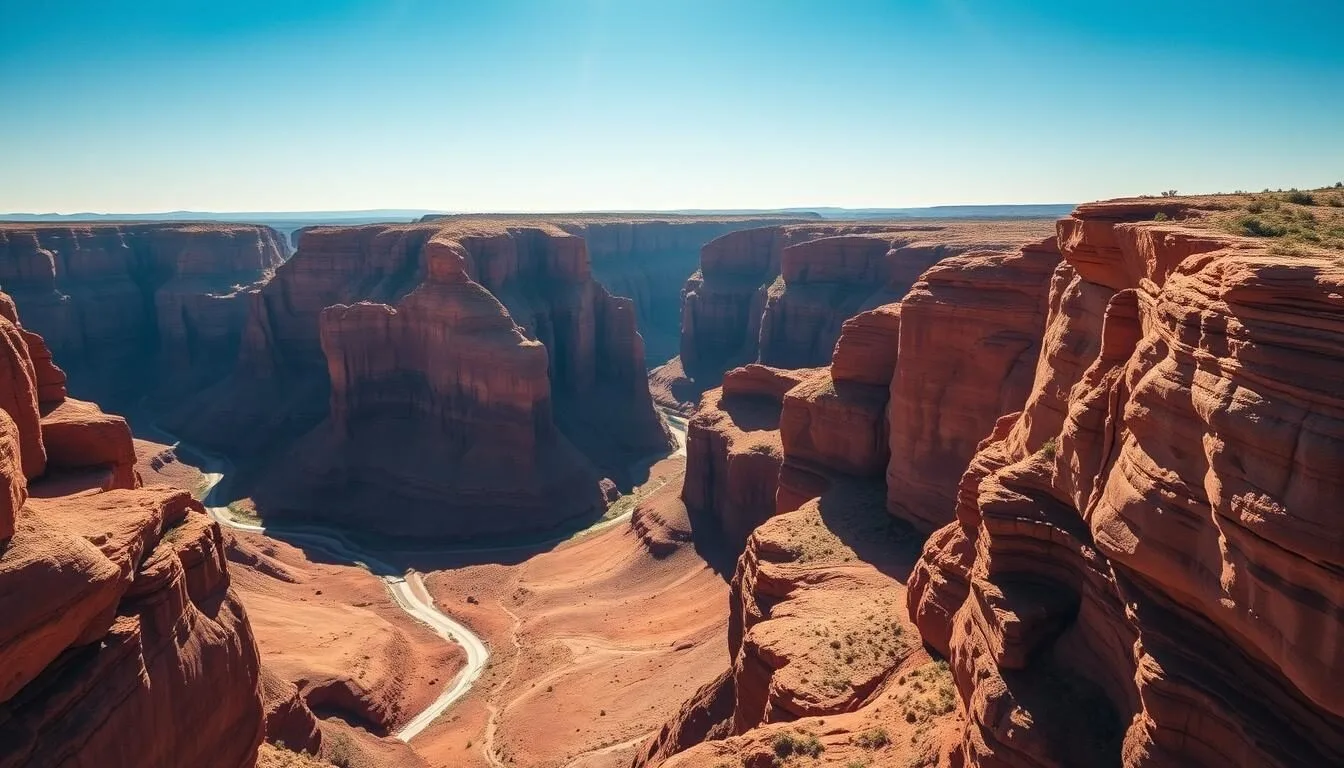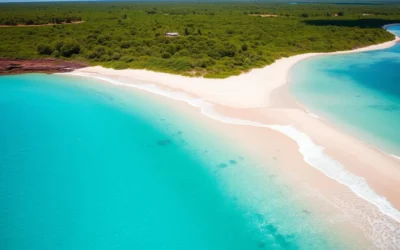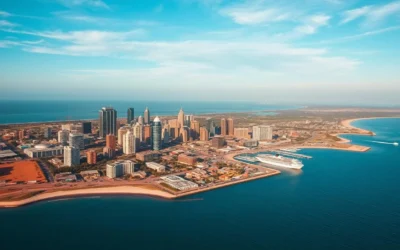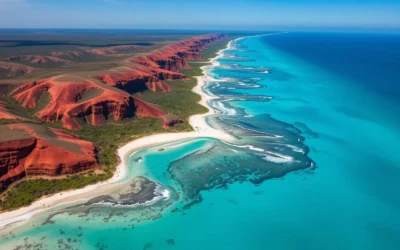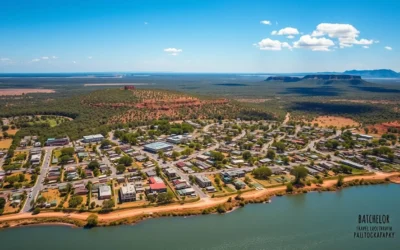Did you know that the towering sandstone walls of Kings Canyon in Watarrka National Park took over 440 million years to form? This ancient landscape, sacred to the Luritja and Arrente peoples for more than 20,000 years, offers some of Australia’s most spectacular scenery and cultural experiences. Located in the heart of the Northern Territory’s Red Centre, Watarrka National Park spans 71,000 hectares of rugged terrain, where dramatic 100-meter high canyon walls rise from the desert floor, creating an unforgettable backdrop for your outback adventure.
Getting There & Planning Your Journey
Watarrka National Park is located approximately 450km southwest of Alice Springs and about 300km northeast of Uluru. The journey itself is part of the adventure, taking you through classic Australian outback landscapes.
From Alice Springs
The most direct route is via Larapinta Drive and Luritja Road, a journey of about 4.5 hours. While the roads are sealed, they’re remote, so ensure your vehicle is well-prepared.
are readily available in Alice Springs, with 4WD options recommended for those planning to explore beyond the main roads.
From Uluru (Ayers Rock)
If you’re coming from Uluru, the drive takes approximately 3.5 hours via Lasseter Highway and Luritja Road. This route is fully sealed and suitable for conventional vehicles.
Many visitors incorporate Watarrka National Park as part of a larger Red Centre itinerary including Uluru and Kata Tjuta.

Best Time to Visit & Weather Tips
The climate in Watarrka National Park is characterized by extreme temperature variations, with scorching summers and cool winters. Timing your visit right can make a significant difference to your experience.
Winter (June-August)
Best time to visit
- Daytime temperatures: 18-23°C (64-73°F)
- Clear blue skies and minimal rainfall
- Cool mornings and evenings (can drop below 0°C)
- Ideal for hiking and outdoor activities
Shoulder Seasons
April-May & September-October
- Daytime temperatures: 25-32°C (77-90°F)
- Fewer tourists than winter months
- Comfortable temperatures for most activities
- Spring wildflowers (September-October)
Summer (November-March)
Extreme caution needed
- Daytime temperatures often exceed 40°C (104°F)
- Hiking restrictions (walks closed after 9am)
- Higher risk of dehydration and heat stress
- Occasional dramatic thunderstorms
Summer Safety Alert: During summer months (December-February), the Kings Canyon Rim Walk is often closed after 9am due to extreme heat. Early morning starts are essential, and rangers may restrict access if temperatures are forecast to exceed 36°C (97°F). Always carry at least 1L of water per person per hour of walking.
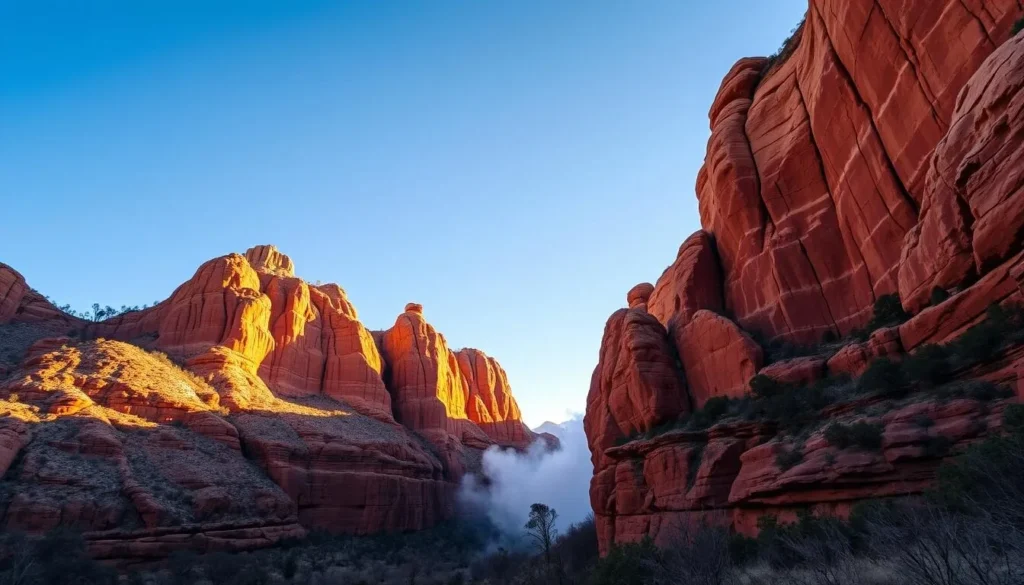
Learn More
Getting Around Locally
Once you’ve arrived at Watarrka National Park, you’ll need to know how to navigate between the various attractions and walking trails.
Self-Drive Options
The main attractions within Watarrka National Park are accessible via sealed roads. The Kings Canyon car park provides access to the Rim Walk, Kings Creek Walk, and other shorter trails. Kathleen Springs is located about 7km from the main canyon area and has its own car park.
For those staying at Kings Canyon Resort or Kings Creek Station, regular shuttles operate to the main walking trails during peak season.
Guided Tours
If you prefer not to drive, numerous tour operators offer day trips and multi-day experiences to Watarrka National Park from both Alice Springs and Uluru. These guided tours often include transportation, expert commentary, and sometimes meals.
Aboriginal-guided walks are available through the Karrke Aboriginal Cultural Experience, offering unique insights into the traditional culture and bush tucker of the region.
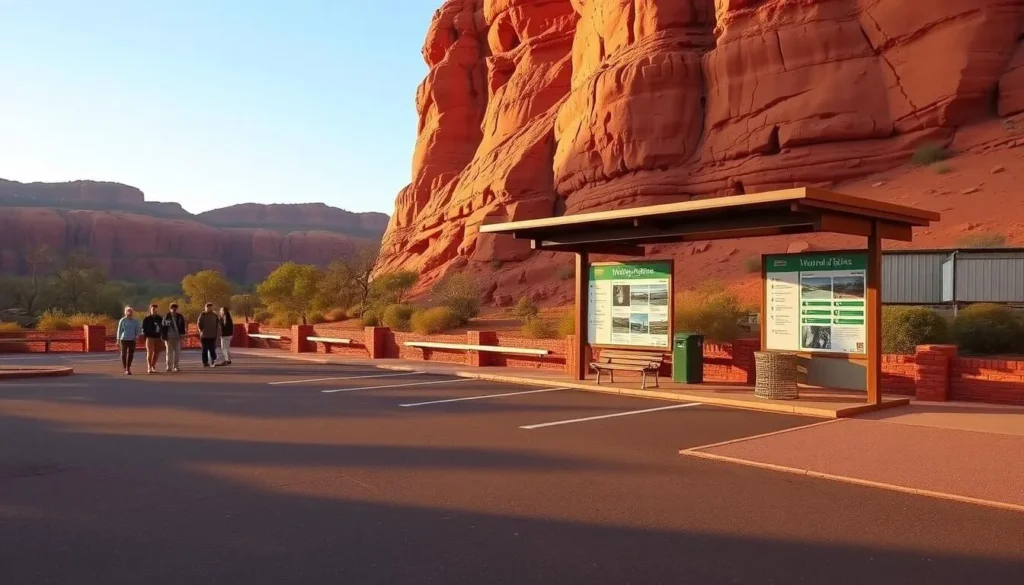
Where to Stay
Despite its remote location, Watarrka National Park offers several accommodation options to suit different budgets and preferences. Booking ahead is essential, especially during the peak winter season.
Kings Canyon Resort
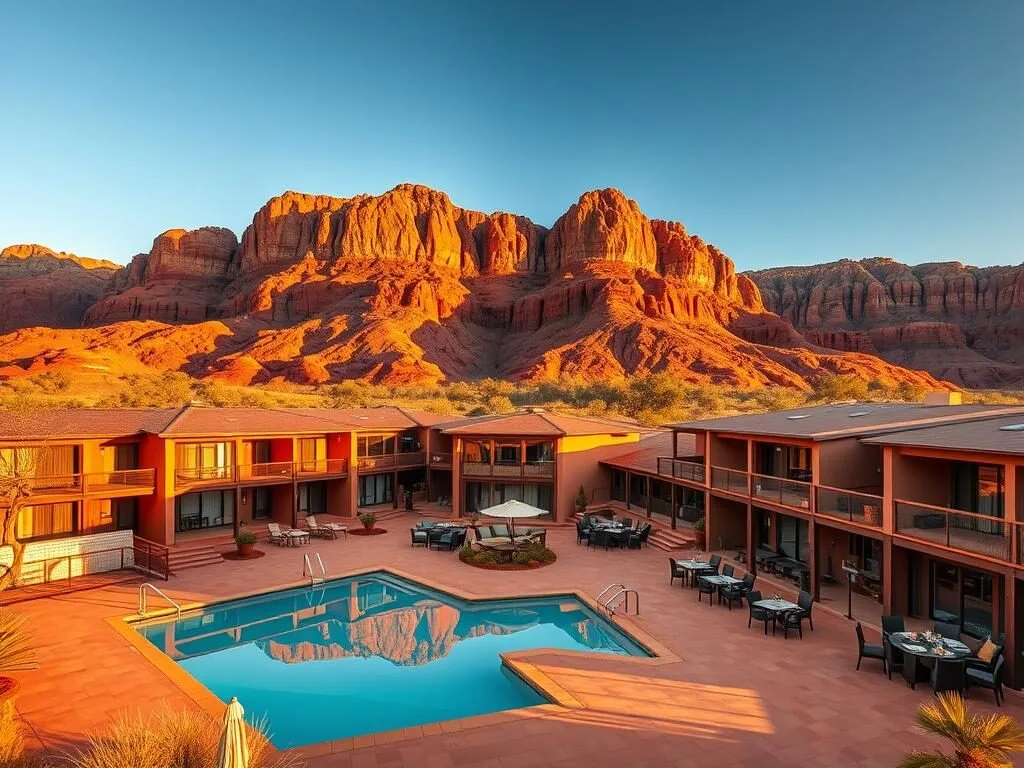
Located just 7km from the canyon, this resort offers a range of options from campgrounds to deluxe spa rooms. Facilities include restaurants, swimming pool, and sunset viewing platform.
Price range: $30 (camping) to $450 per night
Kings Creek Station
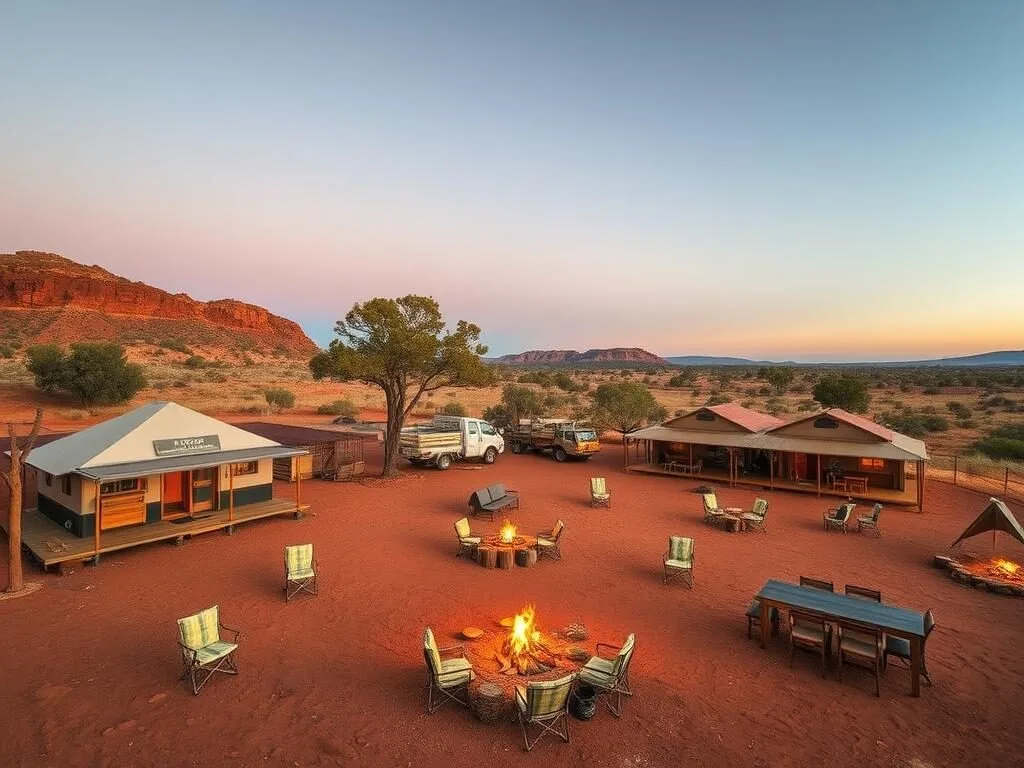
This authentic working camel station is located 36km from Kings Canyon. Accommodation includes safari cabins, glamping tents, and unpowered campsites. The station cafe serves famous camel burgers and other outback cuisine.
Price range: $25 (camping) to $220 per night
Remote Camping
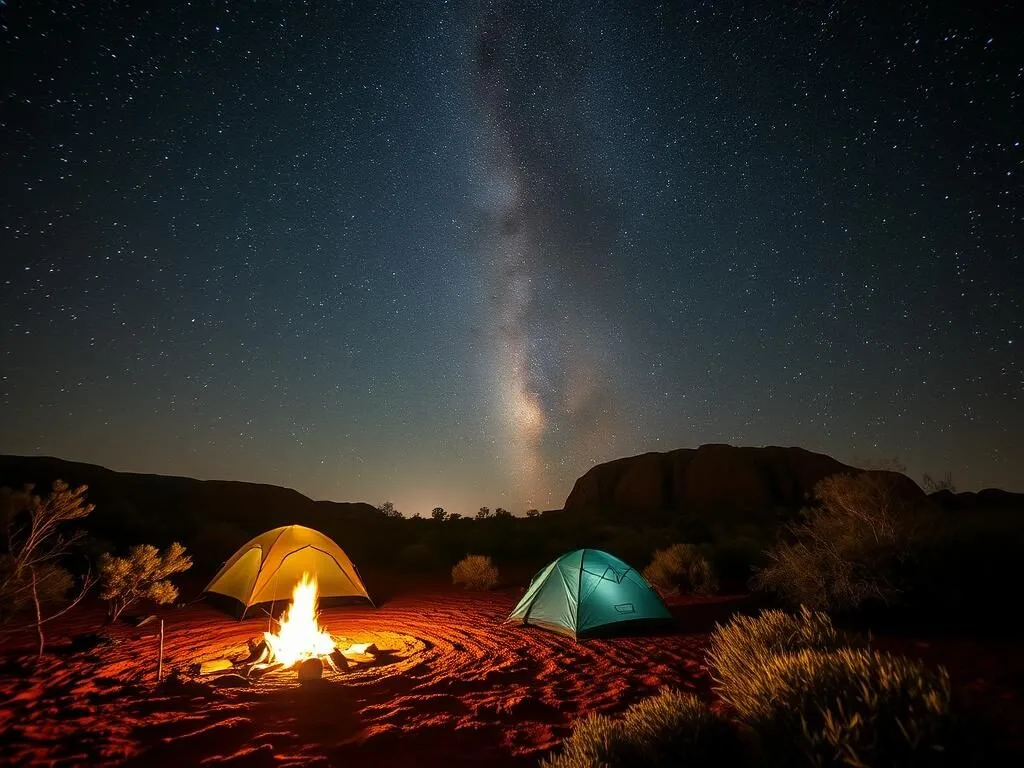
For the adventurous, bush camping is permitted in designated areas along the Mereenie Loop Road (4WD recommended). These basic sites have no facilities but offer incredible stargazing and solitude.
Price range: Free to $15 per night (permit may be required)
Dining & Local Cuisine
Dining options in Watarrka National Park are limited but offer unique outback culinary experiences. From bush tucker to sunset barbecues, here’s where to satisfy your appetite after a day of exploration.
Resort Dining
Kings Canyon Resort features multiple dining venues:
- Carmichael’s Restaurant – Fine dining featuring native ingredients and Australian wines
- Outback BBQ & Grill – Casual outdoor dining under the stars with live entertainment
- Sunset Viewing Platform – Evening canapes and drinks while watching the sunset over Carmichael’s Crag
Station & Bush Tucker
For authentic outback flavors:
- Kings Creek Station Cafe – Famous for camel burgers, homemade quandong pie, and barista coffee
- Karrke Aboriginal Cultural Experience – Learn about traditional bush foods like witchetty grubs, bush tomatoes, and native seeds
- Self-catering – Both Kings Canyon Resort and Kings Creek Station have basic supplies for campers
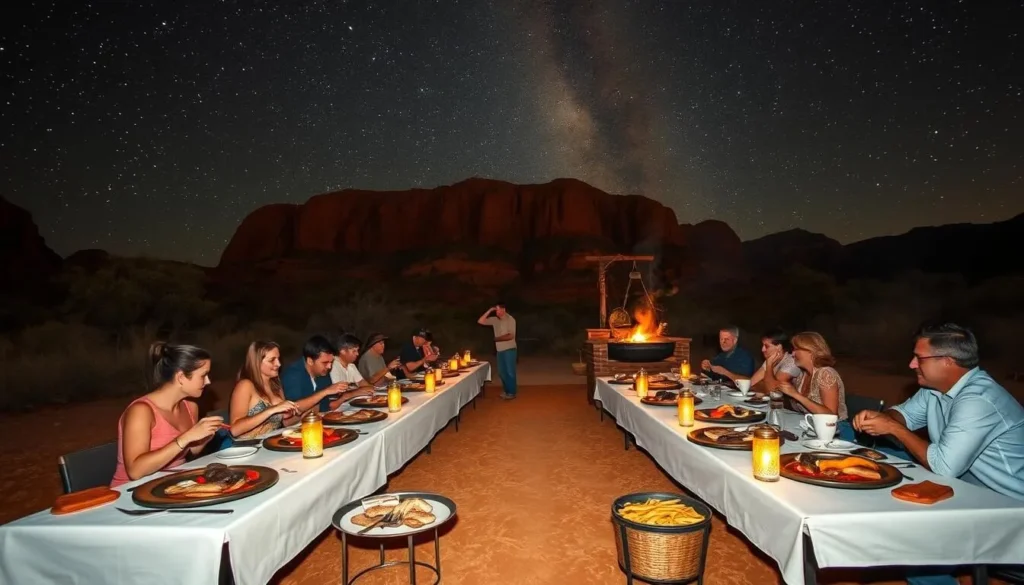
Tip: Water is precious in the outback. Bring refillable water bottles and top up at designated drinking water stations. Most accommodations provide filtered drinking water for guests.
Attractions, Sightseeing & Activities
Watarrka National Park offers a diverse range of activities centered around its spectacular natural landscape. The iconic Kings Canyon is the main attraction, but there’s much more to discover.
Walking Trails
Kings Canyon Rim Walk
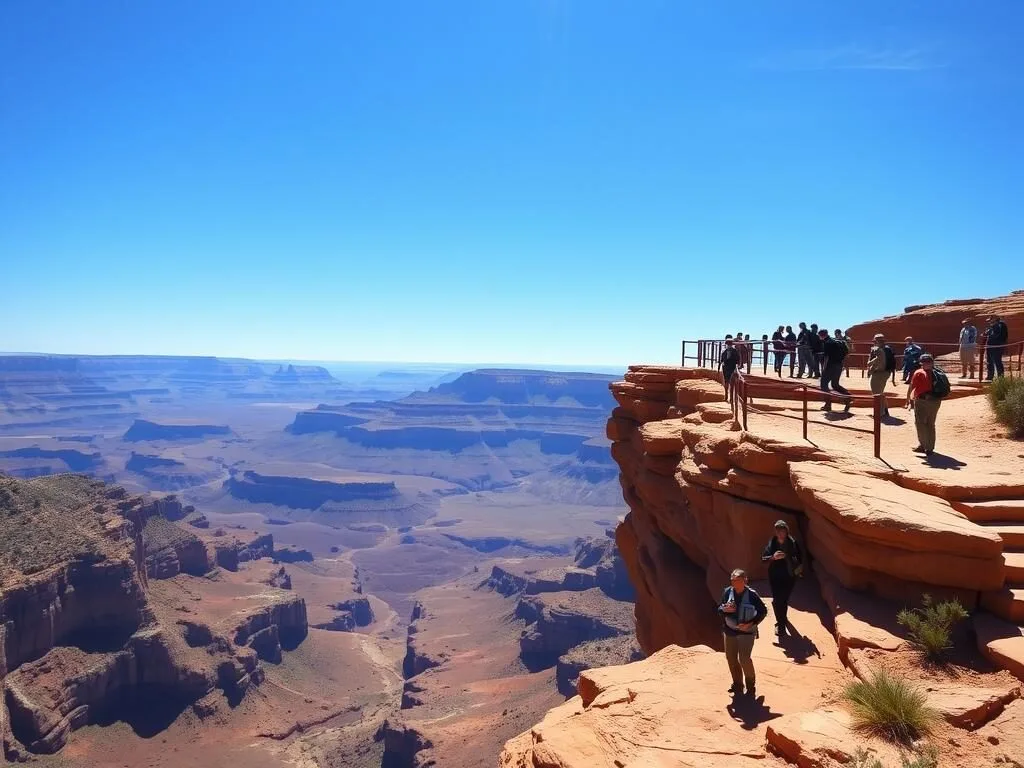
Distance: 6km loop (3-4 hours)
Difficulty: Moderate to challenging
The signature experience of Watarrka National Park begins with a challenging 500-step climb to the canyon rim. Once at the top, you’ll be rewarded with breathtaking views as you circle the canyon edge, passing through the weathered domes of the ‘Lost City’ and descending to the lush ‘Garden of Eden’ waterhole.
Kings Creek Walk

Distance: 2.6km return (1 hour)
Difficulty: Easy
This accessible walk follows Kings Creek into the canyon floor. The shaded boardwalk trail is suitable for families and those with limited mobility, offering impressive views of the canyon walls from below. The walk ends at a platform with views of the canyon walls rising more than 100 meters above.
Kathleen Springs Walk
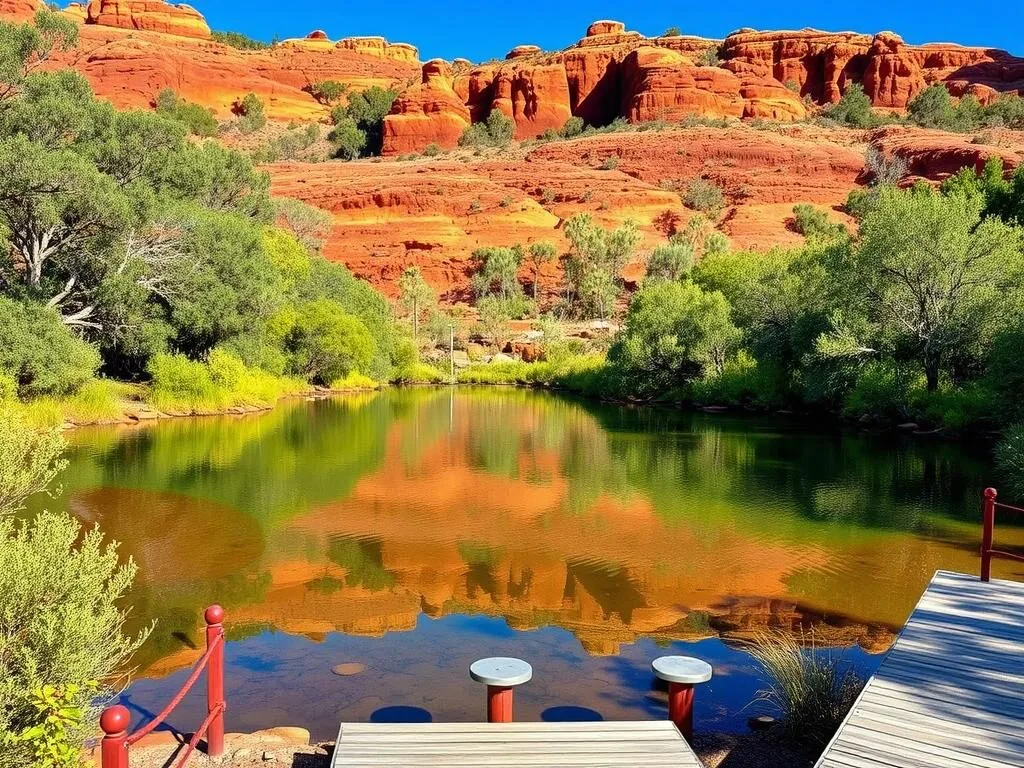
Distance: 2.6km return (1 hour)
Difficulty: Easy (wheelchair accessible)
This family-friendly walk leads to a permanent waterhole at the head of Kathleen Gorge. The trail is fully accessible and features interpretive signs explaining the cultural and natural history of the area. This is a sacred site for the local Aboriginal people, and swimming is not permitted.
Other Activities
Helicopter Tours
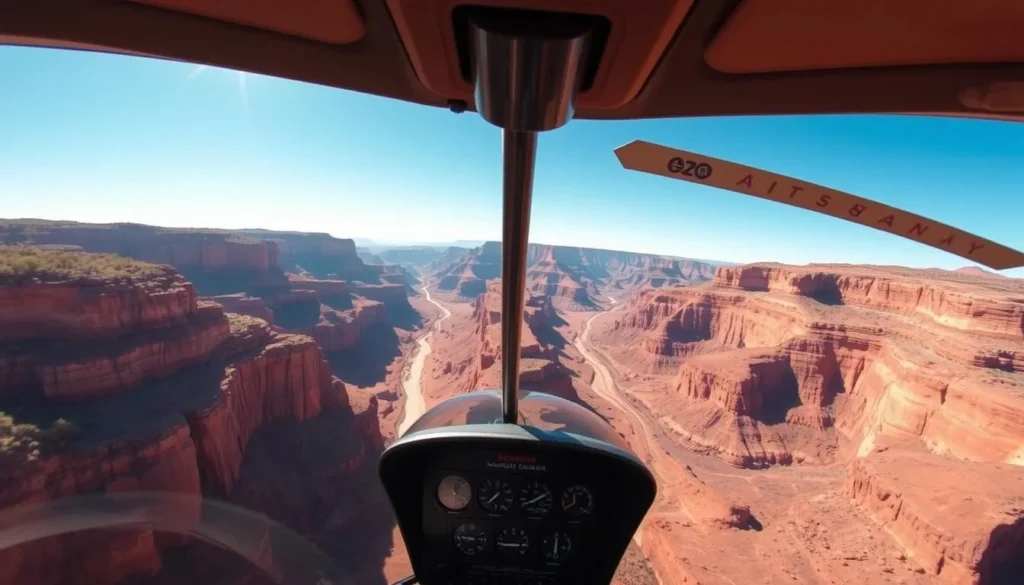
For a truly spectacular perspective, take to the skies on a helicopter tour over Kings Canyon. These flights range from 8-minute scenic flights to extended tours covering Watarrka National Park and beyond. Flights depart from Kings Canyon Resort helipad.
Sunset Viewing
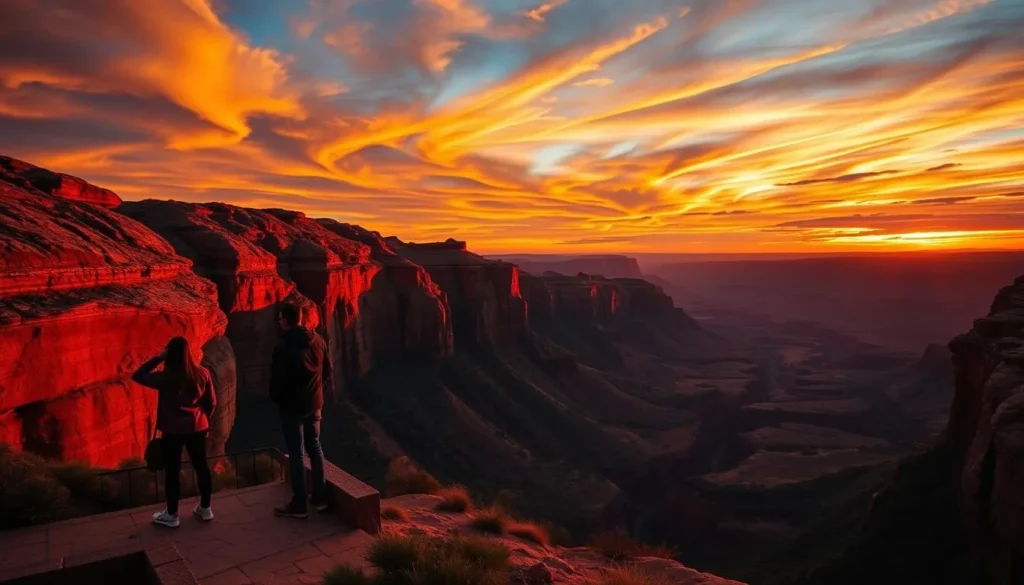
The Sunset Viewing Platform at Kings Canyon Resort offers spectacular views as the setting sun transforms the canyon walls through shades of red, orange, and purple. Enjoy sunset drinks and canapes as part of the resort’s evening program, or simply bring your camera to capture the changing colors.
Aboriginal Culture & Heritage
Watarrka National Park holds deep cultural significance for the Luritja and Arrente peoples, who have maintained connections to this land for tens of thousands of years. Understanding this cultural heritage adds a profound dimension to your visit.
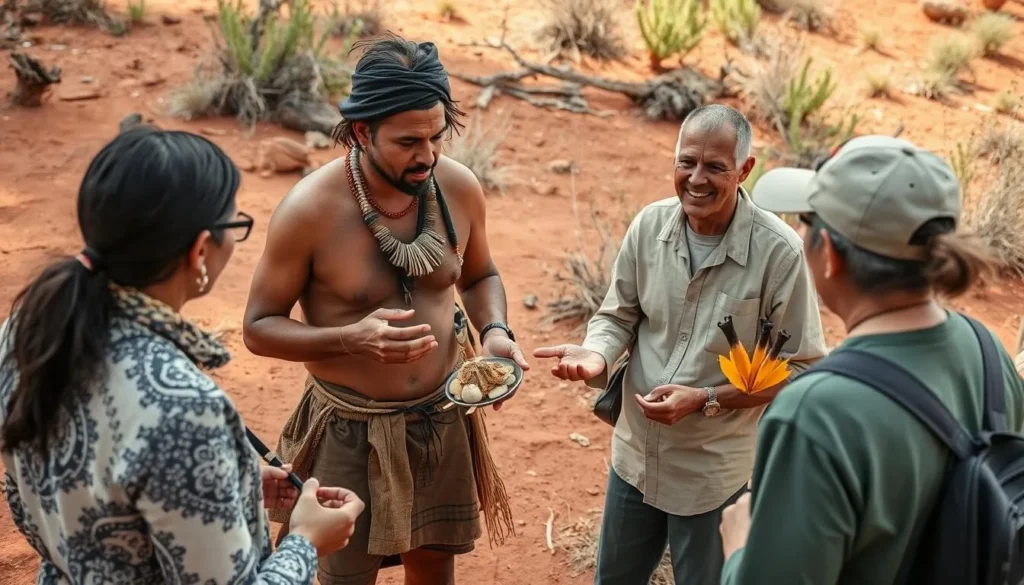
Karrke Aboriginal Cultural Experience
Located near Kings Creek Station, this Aboriginal-owned and operated cultural tour offers authentic insights into traditional culture. During the one-hour experience, Luritja guides share knowledge about:
- Bush tucker identification and preparation
- Traditional medicine plants and their uses
- Weapon making and hunting techniques
- Seed collection and native food preparation
- Indigenous dot painting and its significance
This experience provides economic opportunities for the local community while preserving and sharing cultural knowledge.
Cultural Protocols
When visiting Watarrka National Park, it’s important to respect the cultural significance of the area:
- Some sites within the park are sacred – observe signage and restrictions
- Photography may be restricted in certain areas – check signs or ask guides
- Swimming is prohibited at Kathleen Springs and the Garden of Eden waterhole
- Stay on marked trails to avoid disturbing culturally significant areas
- Listen to and respect the guidance of Aboriginal rangers and guides
By respecting these protocols, you help preserve both the natural environment and cultural heritage of Watarrka.
Book Cultural Experience
Nature & Wildlife
Despite its harsh desert appearance, Watarrka National Park supports a surprising diversity of plant and animal life. The unique geology and presence of permanent waterholes create microhabitats that sustain life in this arid environment.
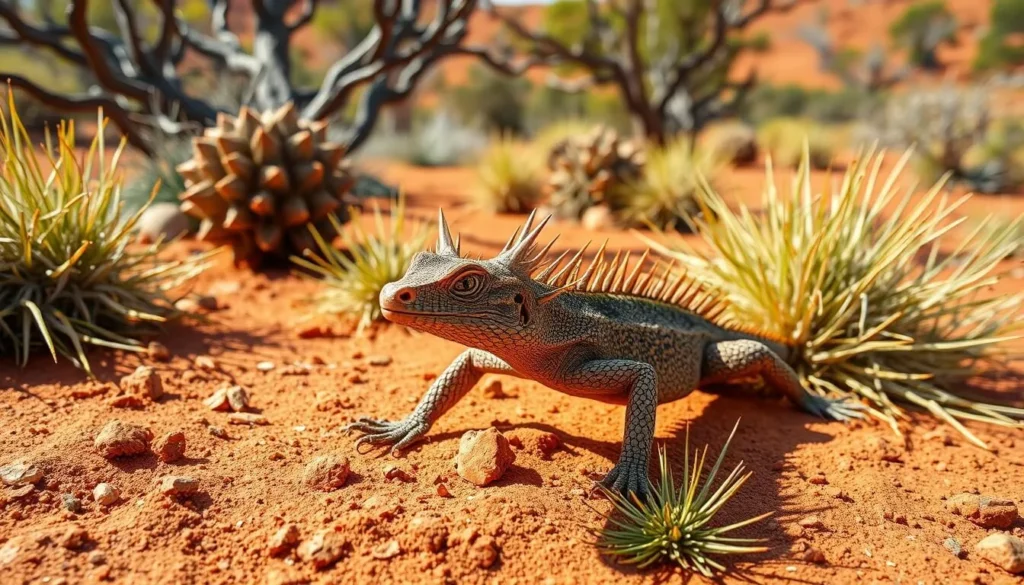
Flora
The park contains over 600 plant species, many with remarkable adaptations to survive in the harsh environment:
- Ghost Gums – Distinctive white-trunked eucalypts that cling to the canyon walls
- Desert Oak – Iconic trees with needle-like foliage that conserves water
- Cycads – Ancient palm-like plants found in the sheltered Garden of Eden
- Spinifex – Spiky grass that dominates the desert floor
Fauna
Dawn and dusk are the best times to spot wildlife in the park:
- Red Kangaroos – Australia’s largest marsupial, often seen in open areas
- Thorny Devils – Distinctive spiky lizards with unique water-collecting abilities
- Dingoes – Wild dogs that roam the park (do not approach or feed)
- Wedge-tailed Eagles – Australia’s largest bird of prey, often soaring above the canyon
Geology
The spectacular landscape of Kings Canyon formed over millions of years:
- Mereenie Sandstone – 440-million-year-old rock forming the canyon walls
- The Lost City – Beehive-shaped rock domes created by erosion
- Garden of Eden – Permanent waterhole formed by ancient geological processes
- Fossil Evidence – Marine fossils revealing the area’s underwater past
Practical Travel Tips
Visiting remote Watarrka National Park requires preparation. These practical tips will help ensure a safe and enjoyable experience in this spectacular but challenging environment.
Essential Packing
- Water – Minimum 1L per person per hour of walking
- Sun protection – Wide-brimmed hat, sunscreen, sunglasses, and long-sleeved shirts
- Sturdy footwear – Closed hiking shoes with good grip
- Layers – Temperatures can vary dramatically between morning and midday
- First aid kit – Include bandages, antiseptic, and personal medications
- Insect repellent – Flies can be numerous, especially in summer
- Camera – With extra batteries (charging facilities may be limited)
Safety Information
- Register – Sign the walker registration book before starting trails
- Heat safety – Start walks early in summer, avoid midday heat
- Mobile coverage – Limited or non-existent in most areas
- Emergency contacts – Save park ranger numbers before arrival
- Wildlife awareness – Watch for snakes on trails, especially in warmer months
- Vehicle preparation – Ensure sufficient fuel, water, and supplies
- Road conditions – Check latest updates before departing
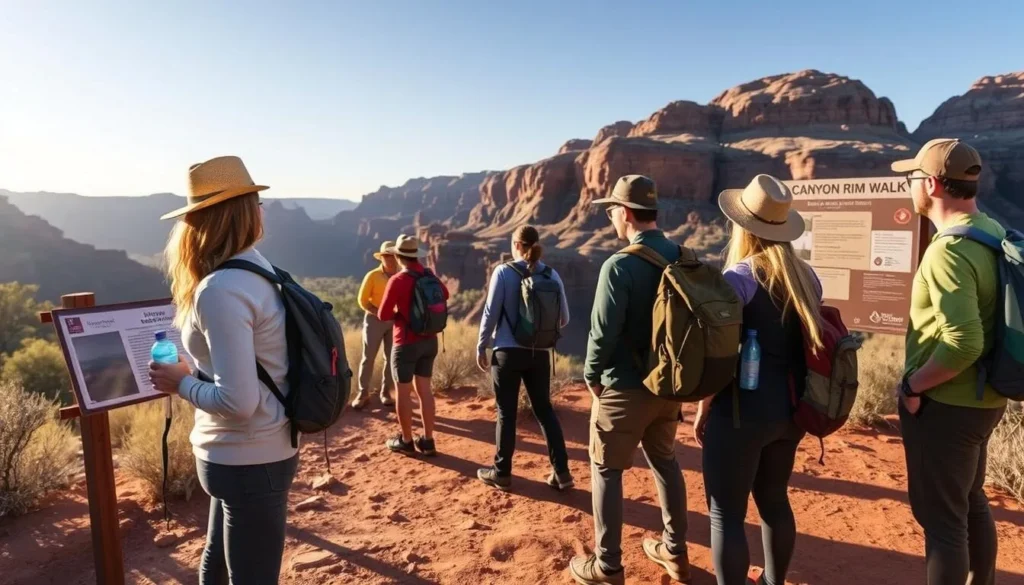
2024 Road Alert: Parts of the Mereenie Loop Road (Red Centre Way) may be closed or require permits during certain periods. Always check the latest road conditions with the Northern Territory Road Report before departing.
Photography Tips
Watarrka National Park offers spectacular photography opportunities, from dramatic landscapes to night sky wonders. Here are some tips to capture memorable images.
Best Photo Spots
- Cotterill’s Lookout – Panoramic views of the canyon (early morning)
- Garden of Eden – Reflections in the waterhole (midday for less shadows)
- The Lost City – Weathered domes (late afternoon for texture)
- Sunset Viewing Platform – Canyon walls changing color (sunset)
- Kings Creek – Ghost gums against red cliffs (morning or late afternoon)
Night Sky Photography
The clear desert air and minimal light pollution make Watarrka perfect for astrophotography:
- Best during new moon periods for maximum star visibility
- Use a tripod and remote shutter release to avoid camera shake
- Try settings around ISO 3200, f/2.8, 20-second exposure
- Include landscape elements for context and scale
- The Milky Way is most visible between May and September
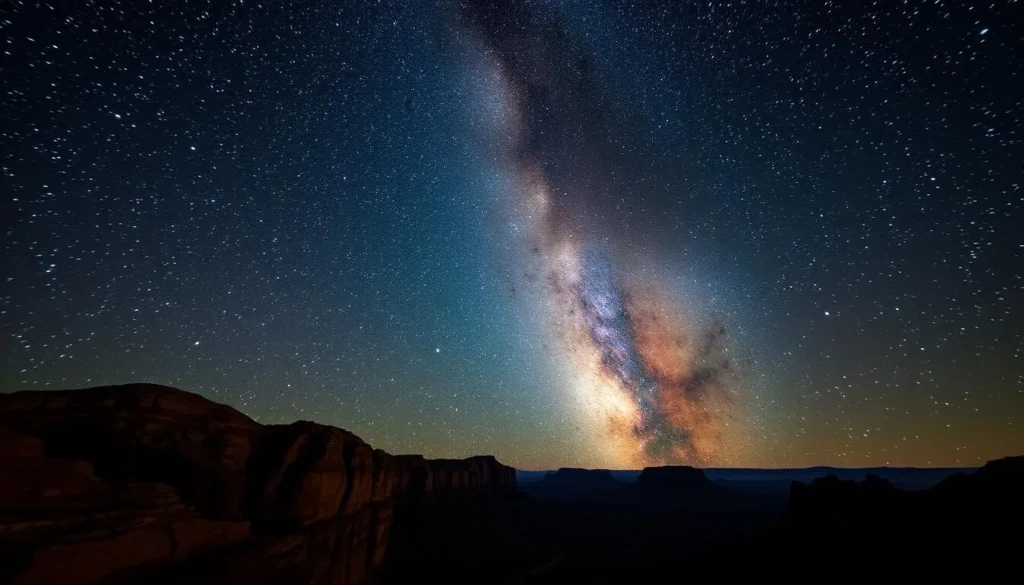
Plan Your Watarrka Adventure
Watarrka National Park offers a perfect blend of natural wonder, cultural significance, and outback adventure. From the breathtaking Kings Canyon Rim Walk to peaceful moments at Kathleen Springs, this ancient landscape provides unforgettable experiences for visitors willing to venture into Australia’s Red Centre.
Whether you’re planning a day trip or a longer stay, the dramatic scenery, Aboriginal cultural connections, and unique desert ecosystem make Watarrka National Park one of Australia’s most rewarding destinations. Remember to respect both the natural environment and cultural significance of this special place as you explore its many wonders.
The above is subject to change.
Check back often to TRAVEL.COM for the latest travel tips and deals.
